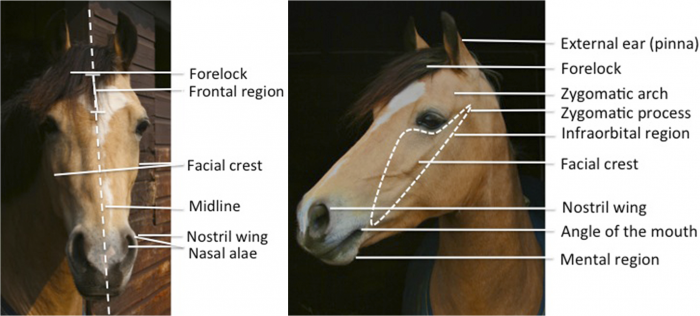
Horses have more facial expressions than imagined
Facial Action Coding Systems (FACS) provide an objective systematic methodology of identifying and coding facial expressions on the basis of underlying facial musculature and muscle movement. FACS have the potential to assess and improve welfare for horses, as well as enhancing our understanding of communication and cognition. FACS are anatomically based and document all possible facial movements. A wide range of facial movements were identified, including many that are also seen in primates and other domestic animals (dogs and cats).
The precise anatomy of the fascial muscles of the horse was first documented by dissection. Overall, the facial muscles of horses are very complex, and although there are differences, there are a surprising number of similarities with humans and other primates.
After that 15 hours of video footage of 86 horses with a wide range of naturally occurring horse behaviours was analysed. Discrete facial movements were identified, their proposed muscular basis was noted, and they were given a code. The reliability of others to be able to learn this system (EquiFACS) and consistently code behavioural sequences was high—and this included people with no previous experience of horses.
Fascial expression include brow raising, eyelid movement, blinking, visability of eye white, upper lip raising, lip corner pulling, nostril lifting, lip depression or relaxation, chin raising, lip curling, lips parting, jaw movement and a variaty of ear movements. A more extensive discription of al these movement including pictures is found in the full scientific artikel.
Expert opinion by fitensoepeldier.nl
Well-educated study. Using similar FACS that already existed for people and other animal species. On the basis of specific anatomy found in dissection, these Facs where adapted to the horse. The study includes a test about the user reliability of this FACS. The coding proved to be reliable also for non-horse experts.
> From: Wathan et al., PLoS ONE 10 (2015) . All rights reserved to 2015 Wathan et al. Click here for the online summary.


